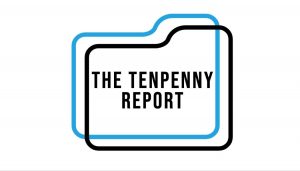In August 2022, I tweeted the video of Nicole Kidman eating bugz on camera to normalize eating insects to the masses. I wonder how much Nicole was paid to give herself a stomach ache and an inflammatory response? Insects contain CHITIN which cannot be processed by the human gut. However, chitin is a polysaccharide that is very tasty to cancers, parasites, and fungi.
As I’ve investigated transhumanism, I’ve wondered what is this sick fascination/connection between parasites, insects, and nanotech. They use CHITIN in their nanotech. Next to cellulose, chitin is the second most plentiful biomaterial that exists on earth; it has a yearly production of 1011 tons. Chitin is manufactured into a raw dried powder from the exoskeleton of seafood shellfish, crabs, shrimps, insects, and edible mushrooms of fungus species and seaweed algae.
Science Direct writes that unquestionably, “the key consideration of the growing scientific interest in chitin nano-objects is the atypical combination of physicochemical and mechanical properties as well as biological properties. Chitin is widely abundant, biodegradable, and biocompatible with low cytotoxicity, present antimicrobial activity, and low immunogenicity. Moreover, chitin nano-objects have a high aspect ratio, high surface area, low density, and reactive surface.”

I would dispute some of this. I don’t think this is safe to ingest or inject. Chitosan is not recommended for pregnant or breastfeeding women, children, and people allergic to shellfish. Chitosan can disturb the absorption of fat-soluble vitamins A, D, E, and K, of certain minerals like zinc, and substances like flavonoids. It can also disrupt the absorption of many drugs.
Regardless, there is a fancy with chitin/chitosan since it’s a biopolymer that has adopted many different structural conformations using a combination of different natural processes like crystallization and non-equilibrium self-assembly.
Yesterday late in the night, I was listening to Kevin W. McCairn’s PhD interview with Dr. Daniel Nagase from British Columbia when he said something that blew my mind!
Nagase said that chitin increases dielectric energy storage. It seems that self-assembled chitin nanofiber networks have mechanical properties!!!
What does a diet of bugs do to your electromagnetic field in conjunction with increased EMFs and nanoparticles all over the place? What is the impact on our electromagnetic field?
Does chitin being a dielectric have anything to do with the acceleration of the “insectization”?

Electricity Production
In his 1975 book Tuning in to Nature: Solar Energy, Infrared Radiation and the Insect Communication System, Philip Callahan, a top-secret radio communications officer and an entomologist, expounds on his theory that insect skeletons are like thermoelectric-coated dielectric waveguide antennas. His biophysical work consists, among other things, of a study of molecular bioelectronics in the insect world.
So Chitin/Chitosan is involved in electricity production. There are also anti-gravitational effects of the chitin shell of certain insects. Interesting isn’t it? Are they feeding us nonedible food that promotes connectivity? Is it another experiment?
A cool side effect would be flying like an insect. But it’s not.
“Using chitin will ultimately drive many innovations and alternatives using biomimicry in materials science,” writes the Royal Society Journal.
There have been studies that look at using chitosan in the production of bioelectricity. A study, from 2021, focuses on the production of electricity from chitin waste, derived from seafood processing, in a microbial fuel cell using a halotolerant catalyst Oceanisphaera arctica.
 There are also chitosan-functionalized graphene oxide and multifunctional chitosan-magnetic graphene quantum dot nanocomposites to release “therapeutics.” There are also many studies on the use of chitosan as an adjuvant in hydrogels. How will they use their chitosan-graphene nanoparticles? And will WiFi be involved? Does anyone have a problem with wanting to inject nanotech to modify our CNS and read our brain? What is Chitin/Chitosan’s role in The Internet of Things and the quest for biosynthetics?
There are also chitosan-functionalized graphene oxide and multifunctional chitosan-magnetic graphene quantum dot nanocomposites to release “therapeutics.” There are also many studies on the use of chitosan as an adjuvant in hydrogels. How will they use their chitosan-graphene nanoparticles? And will WiFi be involved? Does anyone have a problem with wanting to inject nanotech to modify our CNS and read our brain? What is Chitin/Chitosan’s role in The Internet of Things and the quest for biosynthetics?
Chitosan is more popular than you may realize. It’s used in packaging, cosmetics, wines, and supposed organic products. It’s also used in conjunction with the very conductive material known as graphene oxide. I got deleted off Twitter for connecting Charles Lieber with graphene oxide. Why?
There are many studies on the use of chitosan with graphene. Along with studies using it as a vaccine adjuvant, it is also used as a therapeutic vector by optimizing, stabilizing, or functionalizing it with chitosan. Chitosan nanoparticles have immunological activity and mucoadhesive properties. They have been used as a mucosal vaccine delivery system for many antigens.
Chitin is seemingly a favored material. Let’s see what happens as the masses eat the bugs. For me, it’s a hard pass as it should be for anyone who values their life and health.
++++++++++++++++++++++++++++++++++++++++++++++++++++++++++++++++++++++
 Like what you’re reading on The Tenpenny Report? Share this article with your friends. Help us grow.
Like what you’re reading on The Tenpenny Report? Share this article with your friends. Help us grow.
Get more of Dr. Tenpenny’s voice of reason at her website.
Join our list here
Make a donation here (and thank you!)
++++++++++++++++++++++++++++++++++++++++++++++++++++++++++++++++++++++
Maryam Henein is an investigative journalist, and founder, and editor-in-chief of the health magazine and marketplace HoneyColony. Read her Substack here. She is also a functional medicine consultant/coach, and the director of the award-winning documentary film Vanishing of the Bees, narrated by Elliot Page. Follow her on Twitter @maryamhenein. Email her: maryam@honeycolony.com.

